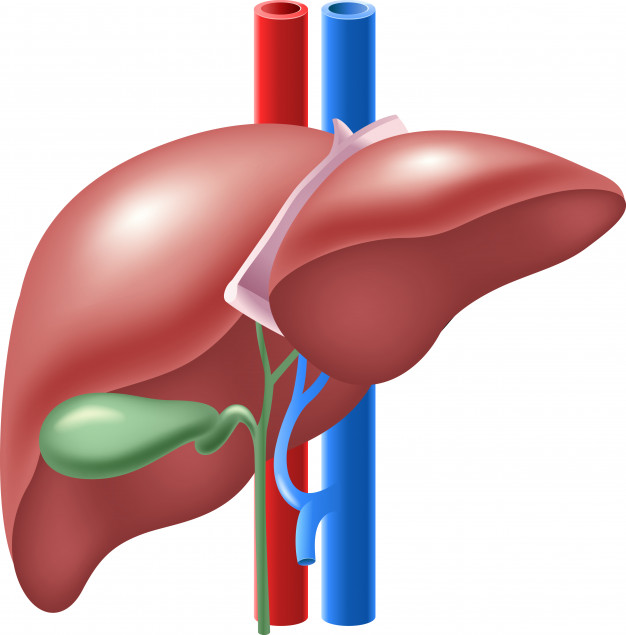Articles

The Secret to Digestive Health: How to Maintain Gallbladder Health Through a Balanced Diet
The gallbladder is an
essential organ for digestion, playing a crucial role in breaking down dietary
fats. It stores bile, a digestive fluid produced by the liver, and releases it
into the small intestine when you eat. This bile contains bile salts and other
compounds that help emulsify and digest fats.
However, problems such
as gallstones can block the bile ducts, leading to symptoms like pain,
bloating, nausea, and vomiting. In severe cases, these blockages may require
medical intervention.
Gallbladder Disease (GBD)
Gallbladder disease is
one of the most common biliary disorders, often presenting without symptoms. It
is a leading cause for emergency room visits due to indigestion, nausea,
vomiting, abdominal pain, and loss of appetite. Gallbladder problems can stem
from a combination of genetic and environmental factors.
Gallstones, which are
solid particles often formed from cholesterol in bile, are the most common
issue. While most gallstones are asymptomatic, they may cause severe pain and
discomfort when they block bile ducts, often requiring gallbladder removal
surgery.
Symptoms and Causes of Gallstones
Typical symptoms of
gallstone attacks include:
·
Pain in the upper right abdomen, often lasting for hours.
·
Symptoms triggered after heavy meals, especially at night.
·
Nausea, vomiting, fever, or jaundice if complications arise.
Silent Gallstones
Most people with
gallstones experience no symptoms. These are referred to as "silent
gallstones" and usually don’t require treatment.
When to Seek Immediate Care
Seek medical attention
if you experience any of the following during or after a gallstone attack:
·
Prolonged abdominal pain.
·
Nausea or vomiting.
·
Fever or chills.
·
Yellowing of the skin or eyes (jaundice).
·
Pale-colored stool or dark urine.
Diet and Gallstones
General Dietary
Recommendations
·
Avoid Trigger Foods: Identify foods that aggravate your symptoms and limit their
consumption.
·
Regular Meals: Avoid fasting, as it can slow bile flow and increase gallstone
risk.
·
Balanced Breakfasts: Eat breakfast promptly after waking to regulate bile
cholesterol levels.
·
Low-Fat Diet:
While beneficial for some, not everyone needs to strictly limit fats. Choose healthy
fats in moderation to maintain bile flow.
Low-Fat Diet
Considerations
·
Beneficial for those experiencing steatorrhea (oily, pale, or
foul-smelling stools).
·
Avoid completely eliminating fats, as small amounts are
essential for health.
The Link Between Weight and Gallstones
Being overweight or
obese increases the risk of gallstones, especially in women. Excess weight can
elevate cholesterol levels in bile and enlarge the gallbladder, impairing its
function.
Rapid weight loss,
including through bariatric surgery, may also increase the risk of gallstones.
Gradual weight loss (0.5 to 1 kg per week) is recommended to minimize this
risk.
Safe Weight Loss Tips to Prevent Gallstones
·
Gradual weight loss of 5–10% of your initial body weight over
six months is ideal.
·
Incorporate moderate physical activity, such as brisk walking or
dancing, for at least 150 minutes weekly.
·
Include strength-training exercises twice a week for optimal
health.
Components of a Healthy, Balanced Diet
·
Fruits and Vegetables: Consume appropriate servings for essential vitamins and
antioxidants.
·
Whole Grains:
Include bread, rice, and pasta, prioritizing whole-grain options.
·
Low-Fat Dairy: Opt for 2–3 servings daily of low-fat milk and yogurt.
·
Lean Proteins: Choose poultry, fish, eggs, beans, and legumes.
·
Healthy Fats:
Replace saturated fats (e.g., butter, red meat) with unsaturated fats (e.g.,
olive oil, nuts, seeds).
·
High-Fiber Foods: Incorporate beans, legumes, fruits, vegetables, and whole
grains.
·
Hydration:
Drink at least 2 liters of water or herbal teas daily.
Foods to Include and Avoid for Gallstone
Management
|
Food
Group |
High-Fat
Foods (Avoid) |
Low-Fat
Alternatives (Include) |
|
Fats |
Butter, margarine, fatty meats,
large amounts of vegetable oils |
Low-fat spreads, cooking sprays |
|
Dairy |
Full-fat milk, cream, yogurt,
cheese |
Skimmed or semi-skimmed milk,
low-fat yogurt, cottage cheese |
|
Fish |
Oily fish like sardines and
herring |
White fish like cod, shrimp, tuna
in water |
|
Meats |
Fried or processed meats,
sausages, burgers |
Lean poultry, trimmed lean meats |
|
Legumes |
– |
Beans, lentils, peas |
|
Starches |
Pastries, chips, creamy pasta
dishes |
Whole-grain bread, rice, potatoes |
|
Fruits |
– |
Fresh, frozen, or canned fruits |
|
Vegetables |
Fried or creamy vegetables |
Steamed or fresh vegetables |
|
Sauces |
Cream-based sauces, mayonnaise |
Tomato-based sauces, low-fat
dressings |
|
Desserts |
Cakes, cookies, custards |
Gelatin, sorbets, low-fat puddings |
Conclusion
Maintaining
gallbladder health is vital for overall digestive well-being. Adopting a
balanced diet, staying physically active, and losing weight gradually can
reduce the risk of gallstones and other gallbladder-related issues.
For those experiencing
gallbladder symptoms, consulting a healthcare professional for personalized
dietary and medical advice is essential.
References
https://www.ncbi.nlm.nih.gov/pmc/articles/PMC4438647/
https://www.mysurgerywebsite.co.uk/website/C81040/files/Gallstones%20Diet%20Sheet.pdf
https://www.niddk.nih.gov/health-information/digestive-diseases/gallstones/dieting
